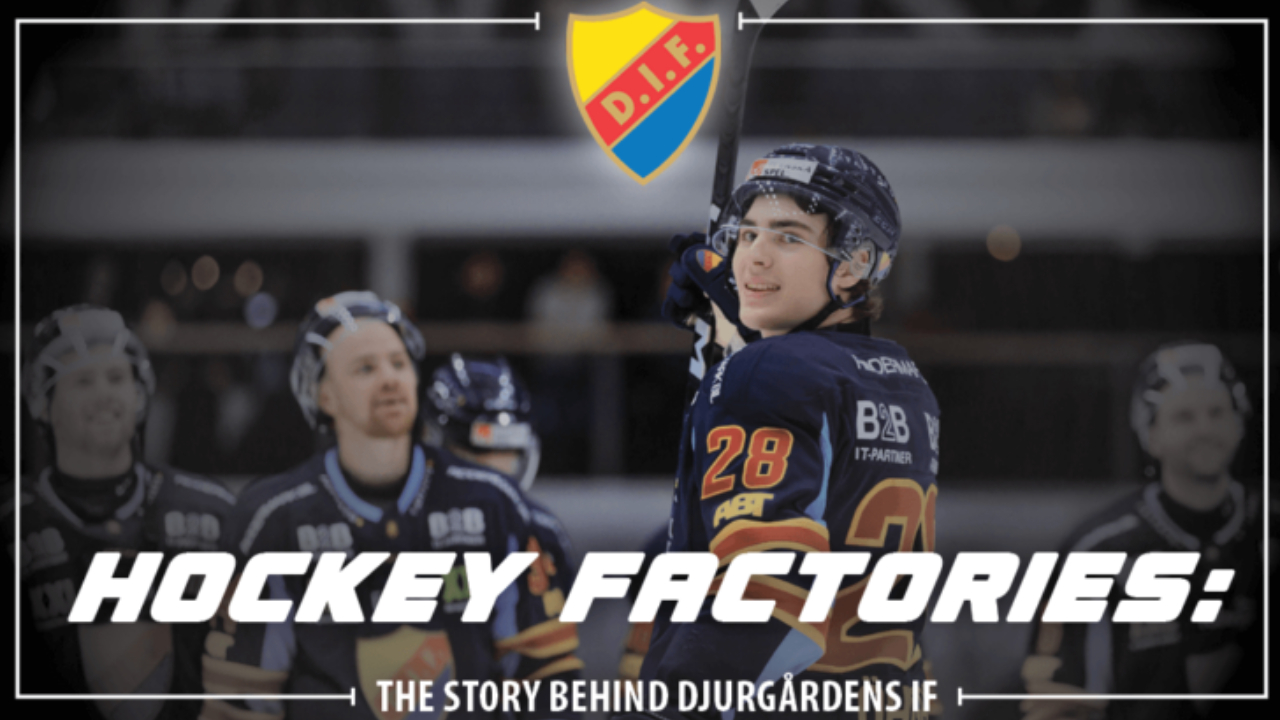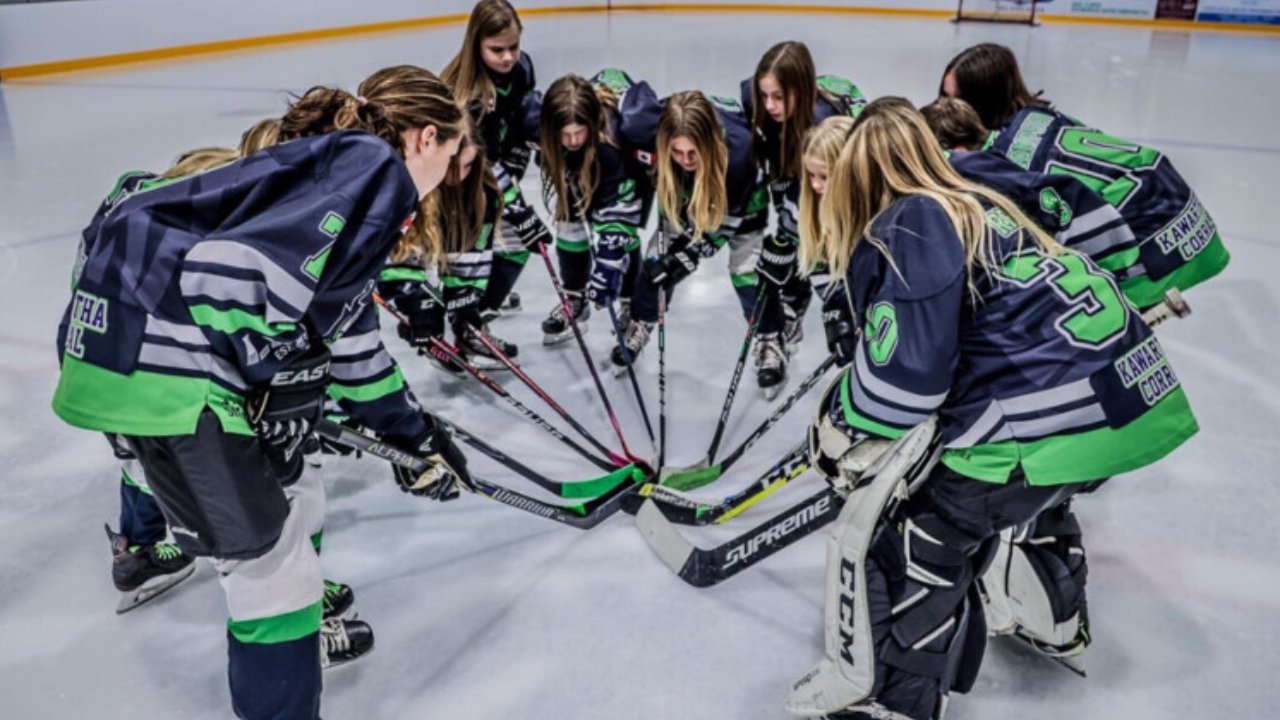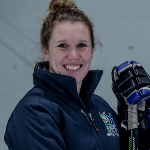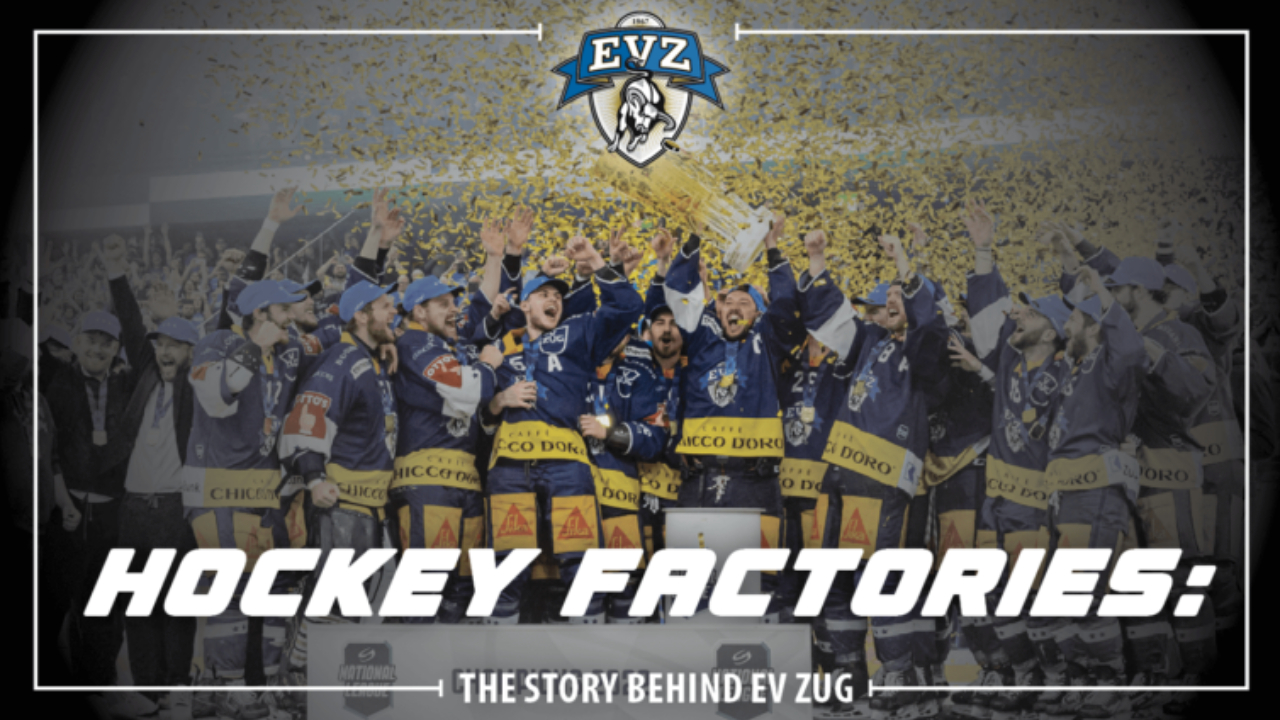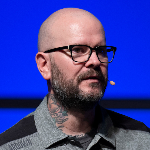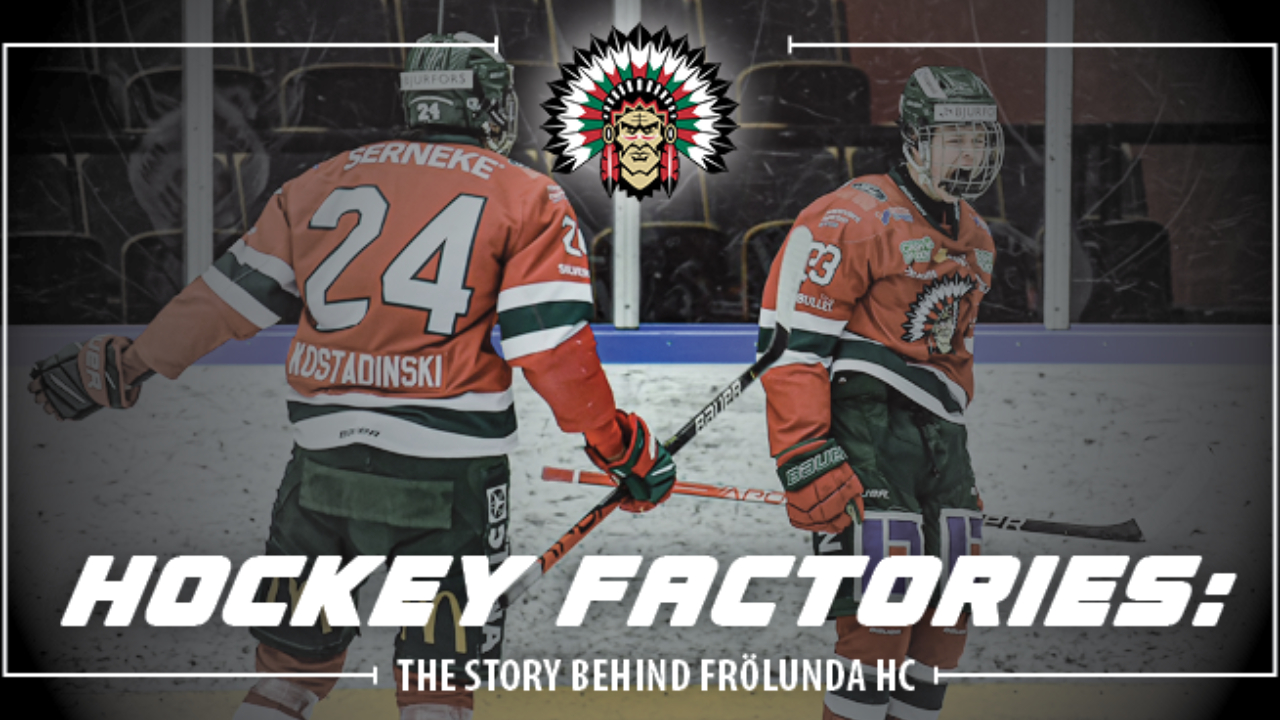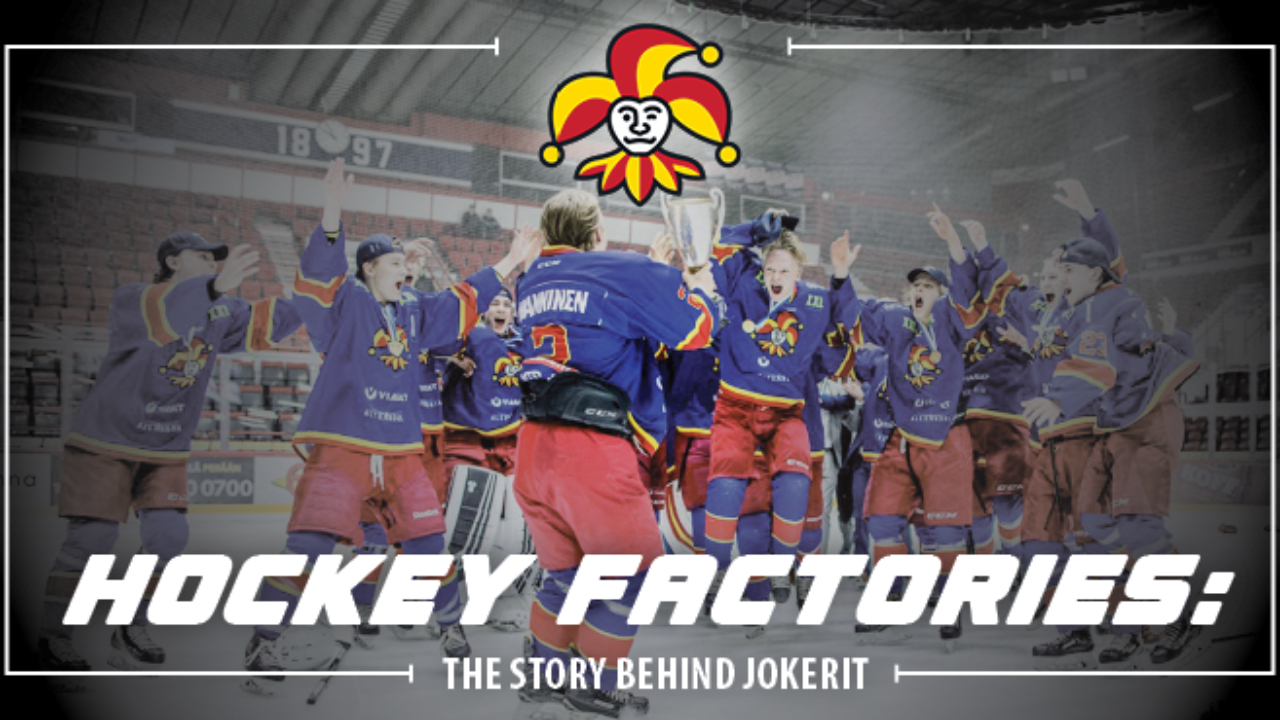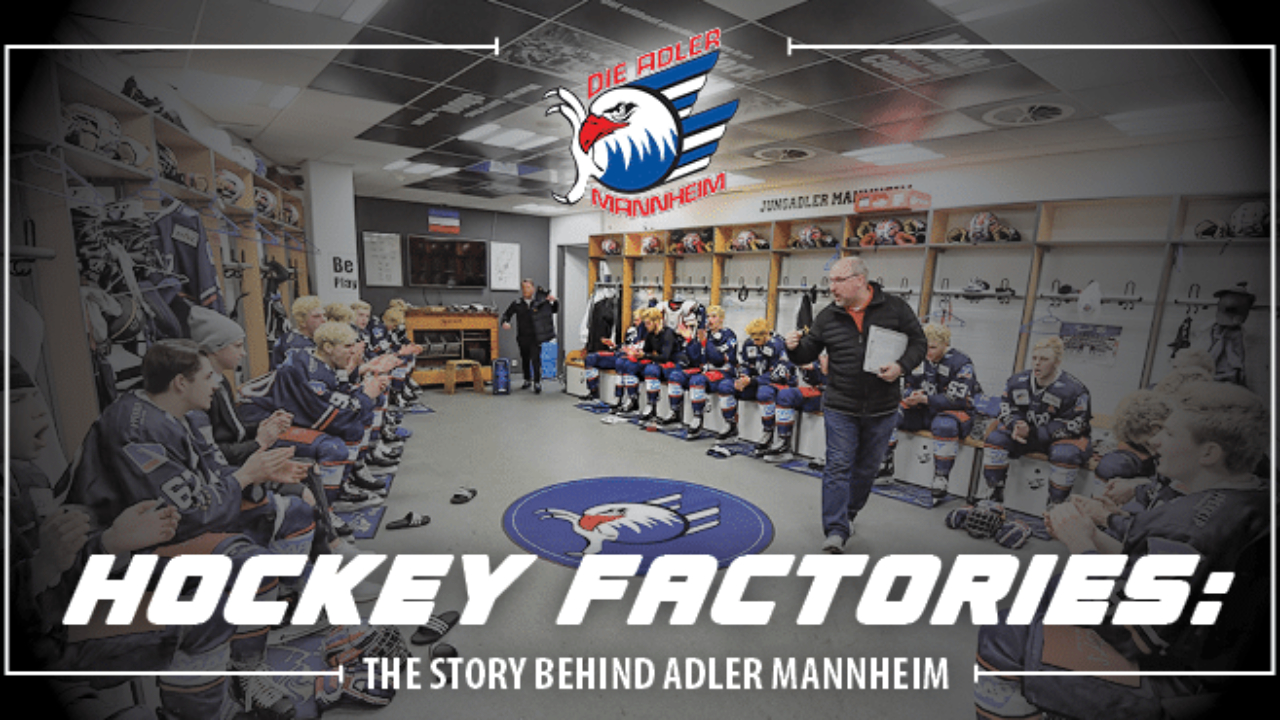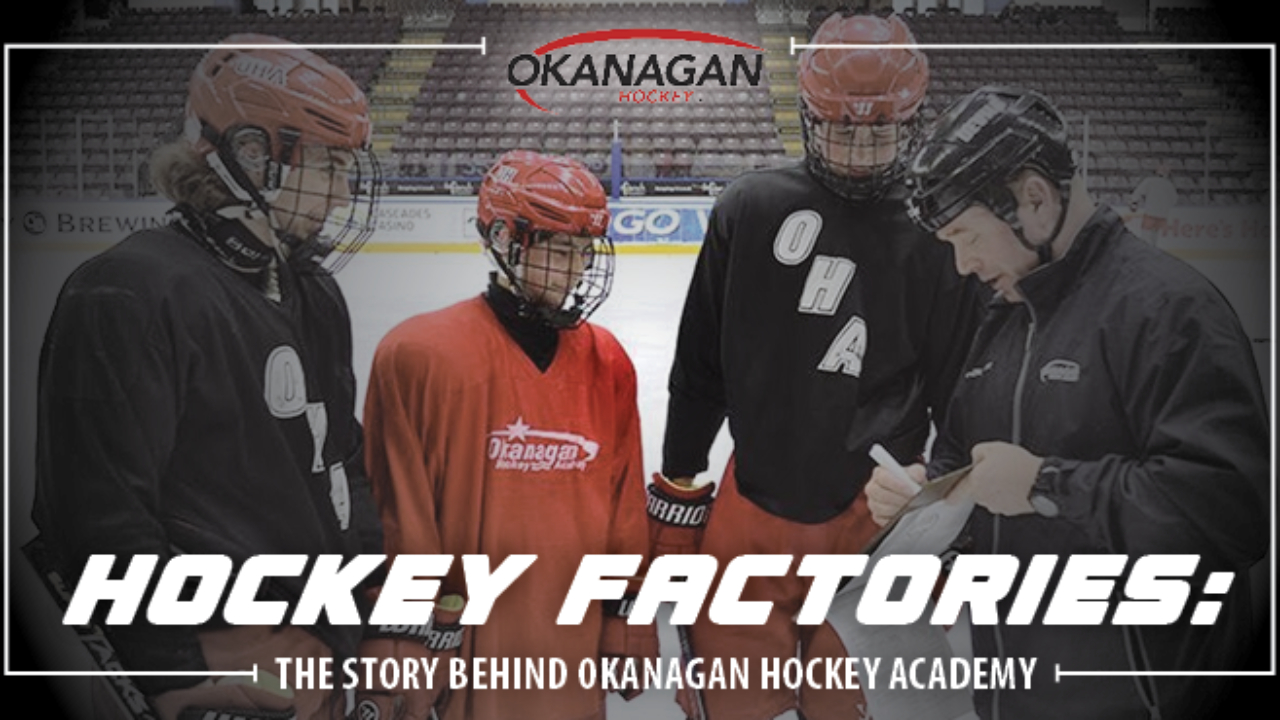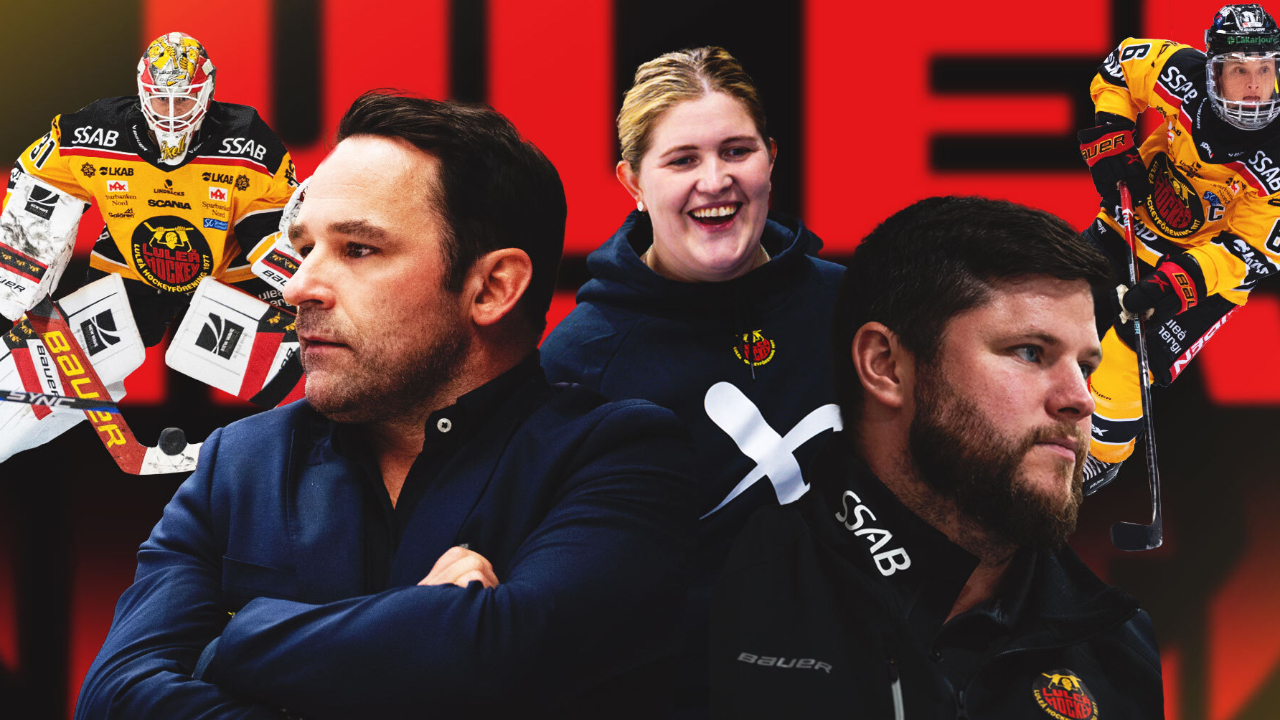
It was my second conversation with Oskar Haggstrom when I hit the jackpot.
I had finished up interviews with players, coaches and families tied to the Luleå program and wanted to do a bit of a deeper dive into what each year within the program looked like.
Haggstrom had what I was looking for in spades.
After a few clicks of his mouse, he shared his screen and there it was: a full breakdown of the coaching module created by Luleå hockey in accordance with the Swedish Ice Hockey Federation.
A chorus of angels sang in the background as we clicked through the pages.
There were rows and columns of every specific skill a player can have and develop, including the overall expectation of the age group.
There was only one problem.
I don’t read Swedish.
Haggstrom walked me through some of the columns and, actually, some of the words are pretty straight forward.
Did you know Puckteknik means Puck technique? Skott is shot!
Huvuddel is essentially the focus and Delmoment is partial moments – according to Google translate.
In 2015-16, Luleå women’s hockey turned the country on its head by entering the SDHL.
During that eight-year period since, they have won six titles.
But we aren’t looking at those quite yet. We are looking at the foundation the program continues to lay today, and the growth of a game and a culture in a small town 900 kms north of their country’s capital.
These documents were not just a template or a guideline.
This was the essence of Luleå hockey.
******
The Luleå men’s program plays in the Swedish Hockey League, the top league in the country, and has been there since the 1984-85 season.
Some of their most recognizable alumni would include Tomas Holmstrom, a four-time Stanley Cup Champion, Mikael Renberg, who played 10 years in the NHL (mostly with the Philadelphia Flyers, but also in Tampa Bay, Phoenix and Toronto), Erik Gustafsson, who also played for the Flyers, and Chris Abbott, who is now the General Manager of Rogle in the SHL.
The club has one Le Mat Trophy victory, in 1996; it won the Champions Hockey League in 2014-15, and a European Championship in 2012.
Men’s hockey has always been in the spotlight in Sweden and the SHL is where they have shone the brightest.
The women’s game had never really gotten its footing, however. Oh, there were some good players and some leagues formed, but everyone was so spread out amongst the vast country that it never really took off.
There was a small club in a small town called Piteå, Sweden. By small, I mean Piteå is the 58th largest city in the country.
The interest in women’s hockey was starting to grow and the club, Munksund, did not have the finances to stay at the top of the league, so a merger was proposed, bringing this club under the control of Luleå, which wanted to get more into women’s hockey and, more so to that, make it equal to the top level of men’s hockey.
In the 2015-2016 season, the Luleå club moved to the SDHL – the Swedish Women’s Hockey League.
The team won the league championship in its first year.
The boom of women’s hockey had officially begun.
******
To say Luleå's girls program started from scratch might be an understatement.
“When I started, there were maybe 4 to 6 players on the ice,” said Haggstrom, who serves as an Assistant Coach with the women’s team and is responsible for the youth program. “In the club, there were around 30 players 10 years ago...now we are at 180 to 200.”
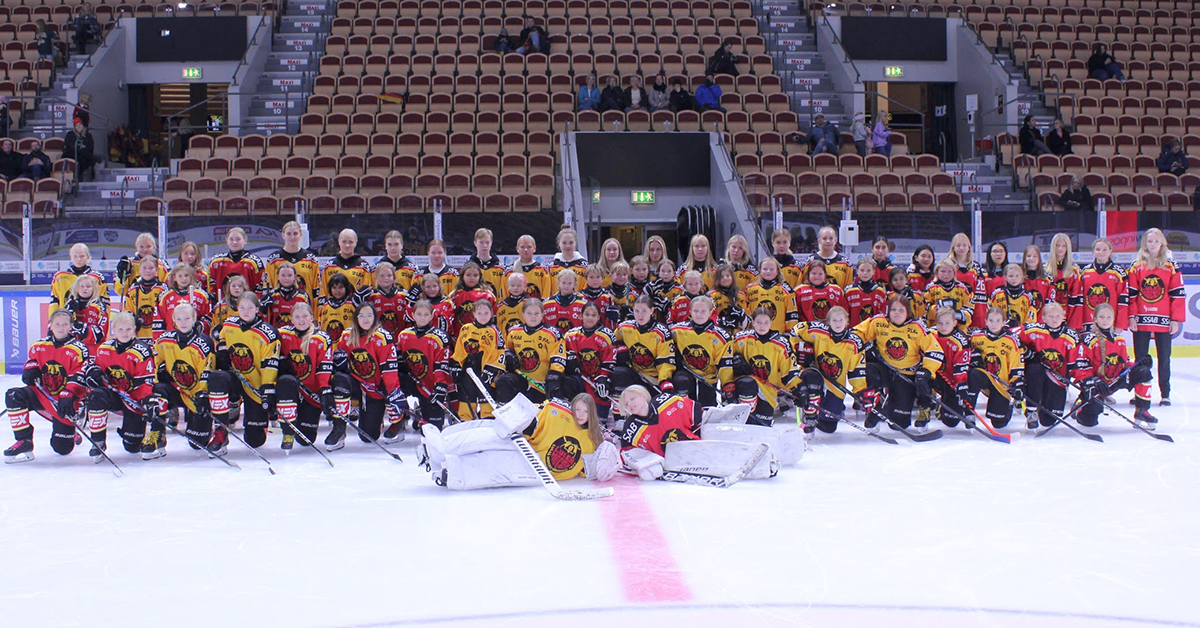
Haggstrom has no doubt about it, when the SDHL team came to town, the spike in enrollment came with it.
“They took players like Emma Nordin, Michelle Karvinen and Emma Eliasson, some big players with great names,” Haggstrom said, speaking of the first team. “There are a couple players from Luleå that were on that team, so the fans were behind everything right away, we were starting to get thousands of people in the stands and that’s where we saw things really take off.”
The women’s team was making regular appearances in schools, they were coming out on the ice with the girls that were new to the program, and going to different community events.
It was an introduction of sorts that this was the top league in Sweden and these were the top players and they were all part of the community.
The second part to that, was sort of an all-comers rule.
There were no tryouts – the club’s ‘hockeygymnasium’ starts at U16 – everyone who wants to join can join.
As Haggstrom says, Luleå hockey is for everyone.
“There is a girl’s league now that you can sign in as a team or as just a player and they will put them into a team for those games, which is a great opportunity for everyone to play games.”
“We just want girls to play hockey and have the same chances as the boys to succeed.”
******
Staffan Spendrup can speak better than anyone to the ever-expanding Luleå girl’s team.
He has two daughters, Nina (15) and Tova (12). Both continue to play in the program, but those three years between them may as well have been three decades in growth.
“When Nina started to play, she was around seven-years-old,” Spendrup recalls. “That was when women’s hockey started to become a big thing. She began to play hockey then and there were maybe five other girls from her age group playing. For my younger daughter, it was easier because there was a whole team of girls that are the same age. It has been crazy to see it grow.”
It may have been easier for some of the younger girls to start playing the game when it was just starting to expand, but let’s not forget there were some that were 12 or 13 years old that became so interested in hockey because of the SDHL team, they wanted to join too.
“In some ways, the way the girls program is built helps those 12 and 13-year-olds,” Spendrup continues. “It’s a challenge for them, of course, but often they have that determination and have done some skating in school, so they learn fairly quickly. On the boys side, it’s not the same. If they wait too long, they can’t start, unfortunately.”
Daniel Nilsson is having the same experience, through his daughter, Natalie.
“When my daughter started seven years ago, we were at 15-16 girls in the entire program, now in just U16 we have 25 girls,” Nilsson remarks.
Nilsson is the Head Coach of the Luleå U16 girls. He’s been with that age group for three years, spending time with the U13s before then.
We talked a lot about practice, what a practice looks like and how the program allocates the education of the game at different levels.
Nilsson, like all of the other parent coaches in the program, builds those himself.
“We will talk to other coaches and get advice and we follow the Swedish Ice Hockey Federation model, which is good,” Nilsson explains. “Everyone needs to work on skating, shooting and puck handling and then around certain groups you will be able to turn your focus to something like edgework or special teams or things like that.”
But the difficult thing for the program as a whole in the beginning was getting a feel for the team with girls at different skill levels, but the same ages.
“New girls come in and older girls leave every year, so we have to sort of restart,” Nilsson begins. “At that point we have to look at what we need and how do we develop the new girls every year, so it is a challenge to push everyone.”
“When we started this program, the girls started at a late age, so it was hard for them to advance but now that we have them starting younger, we are able to see some real growth in the player overall. We have a couple girls that are 2009 birth years that are really, really good and it’s going to be fun to follow them.”
At U16 is when things will start getting “serious” for the girls.
The U16s play around 25 games a year. Practice is everything.
Another challenge of the program was finding those games.
Nilsson explains some games would be against older women who can barely skate and the team would win 19-0 and the next team they play they are four years older than us and we lose 3-0.
So how does the team really know if they are good or not?
“It’s the effort that we evaluate at the end of the day because the competition is hard to find,” Nilsson continues. “The kids should want to win, always. But more importantly, it’s the effort.”
Effort, Nilsson says, comes from trusting his group and building up something any 16-year-old boy or girl, hockey player or artist, struggles with - self confidence.
“The thing we focus the most on is self confidence and doing what you can on the ice,” he says. “In our age group, we work with their skills, but one of the main things we are working with them on is just building up their confidence, supporting them and trying to make them feel good about themselves in what they are doing on and off the ice.”
******
The women’s program, and its early success, put girls’ hockey in a place unlike many in Europe, or around the world.
Klara Kenttala was in a different country when she realized what she could do in her homeland.
The native of Taby, Sweden, fell in love with hockey when she was at a camp in Canada when she was 13-years-old.
She got in touch with a legend, Johanna Fallman, who played at Luleå.
They talked about the development program for junior players, like Klara, that was happening at home.
“That really sparked my interest because we were talking about it and I’ve always had a lot of respect for her,” Kenttala says.
Kenttala is now in her fourth year with Luleå. She’s played for the Swedish U-18 team in the World Junior Championships and is now a three-time SDHL Champion.
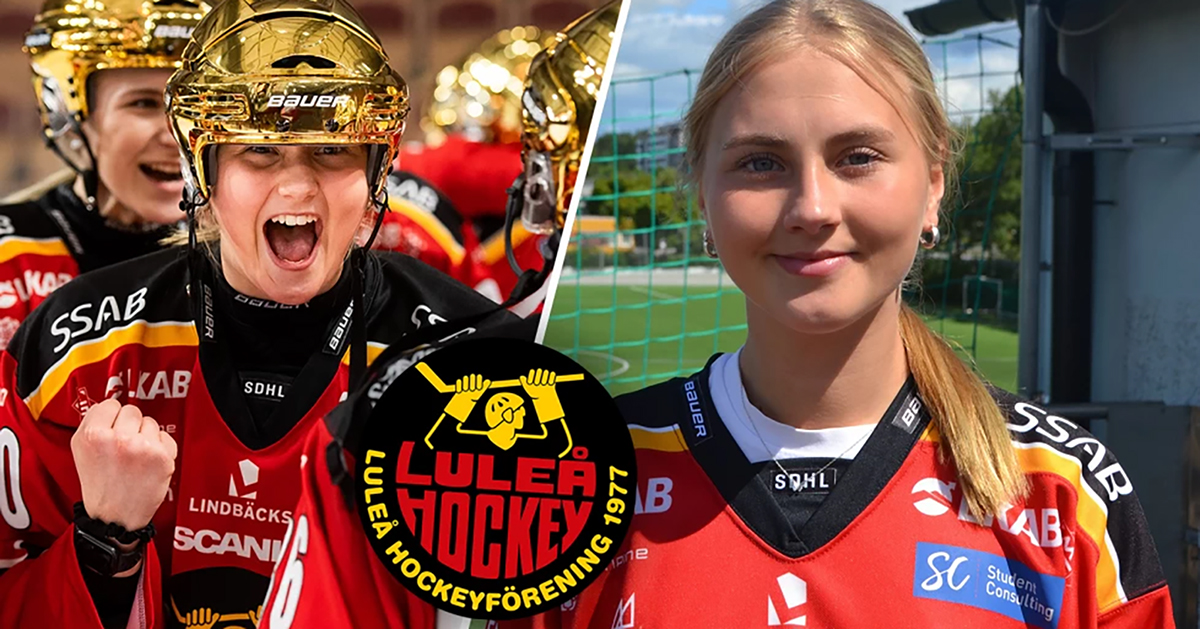
“The structure is definitely one of the biggest differences between Luleå and other programs in Sweden,” Kenttala remarks. “How they plan your days; when you get up, you do off ice training with a real trainer and it all felt really professional, and that they really cared about your development and how you can be the most successful.”
With help from the Swedish Ice Hockey Federation, the Luleå club and the school system, the club is able to place six girls who do hockey and school together.
There are 20 spots in total, the boys program gets 14.
“We have to be particular with which players we take because we also have to know they are good students,” Haggstrom explains. “They can not fail Swedish, Math and English. If they do, they cannot stay in the program.”
“We do have players that don’t go to the school, but they can still be on the team, so there is always that turnover of six players a year.”
Kenttala was one of those students.
“Me, as a 15-year-old, I started school there so with the school we were having two practices a week focused on skills and then four ice sessions with the women’s team and four off ice practices,” she says, detailing her schedule. “Games are always Saturday and Sunday, so it’s a tough week.”
The way Kenttala talks about her time in Luleå is almost as if she’s still in awe of being there.
It’s never more obvious than when she’s talking about Jenni Hiirikoski.
“Jenni is one of my biggest role models when it comes to routine and how to act on and off the ice,” she boasts. “You can watch her eat on road trips and you know ‘ok, I should only be eating this much or this food on road trips’ because she does that. She is the captain of the team and I’ve learned a lot from her.”
Pretty good role model.
Hiirikoski’s resume includes three Olympic bronze medals, a silver and seven bronze medals at the Women’s World Championships, three time Olympic All-Star nods and five SDHL championships.
She might be the best female defender in the world.
In the SDHL, she has 90 goals, 247 assists and 337 points in 244 games.
All in Luleå.
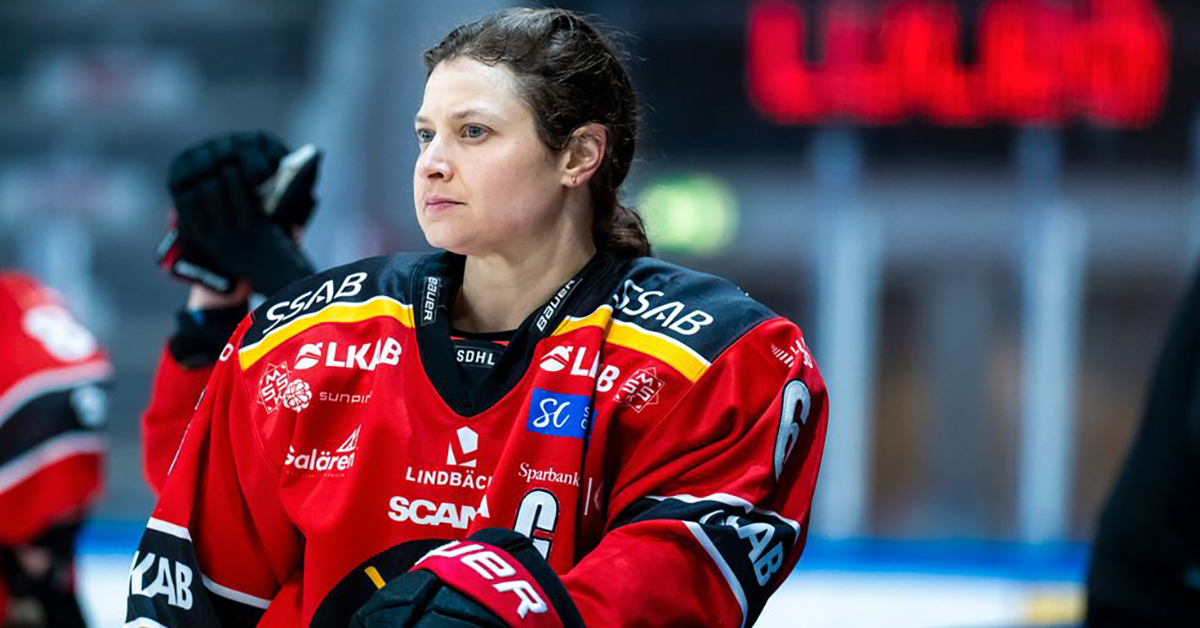
It’s in people like Hiirikoski that the Luleå hockey boom began.
“It’s a big deal when the women’s team gets to come and interact with the girls team,” Staffan Spendrup tells of the times his daughters have been able to experience that. “They come and help run some practices and come to games. Jenne will come down and watch games and talk to the girls and it’s such a lift to the girls, it makes them feel like they are doing something right.”
“They are really good role models, mentors and friends to the girls, which means so much.”
Kenttala might be part of the next wave of great players coming out of Luleå.
“I want to be as good as I can. I want to make the World Championships and the Olympics,” Kenttala says matter-of-factly. “I love to train and I love to push myself, so that is absolutely my goal, but I am still playing hockey because I love the sport and I want to play because I’m still having so much fun.”
******
It’s easy to look at the top and see six championships in eight seasons and come to one of two conclusions: either this team is completely stacked or the competition isn’t very good.
Oskar Haggstrom has had the chance to see the program built from the top and bring that same theme to the lowest of tiers.
“At the top, the physical level in our team is higher than the others. We are really focused on the defence, because we have all the skills to be offensive,” Haggstrom says, describing his program. “It’s a big part of how much we practice defence. We want to be good at that part because we know we are going to score. We have a sense of pride with our defence and keeping the puck out of our net.”
“The game has changed so much. From the first year to now, I think our team now would beat them easily and that’s just to say more about the talent we have and what we have been able to develop.”
The differences for him are obvious.
“Now, you can hit along the boards, which was a big step forward for women’s hockey,” he concludes. “The speed came up; you have to keep your head up and there’s more structure to the game. Of course, everyone shoots better today, skates better, they are smarter players. The girls that are coming through the program now are more technical than they were before and that makes a big difference.”
As the program, and women’s hockey in general continues to grow, Haggstrom points to the importance of recruiting and introducing the game to younger and younger ages in helping hockey get ahead of soccer or floorball.
At some point, as he says, their numbers will be too big and that’s where the hope is that another club is able to take those players because of the rocket speed growth Sweden has seen in the girls game.
“We might be the only ones that have the hockey school, a U10 team, a U13 team, a U16 team and then a women’s league,” Haggstrom admits. “In Sweden, I talk with other coaches that are in the same type of position and we share ideas and try to learn from each other.
“I have no problem talking with anyone and can explain how we think. It’s still up to them to do it. Of course, we are competitors on the ice, but we need to all work together so that we can grow women’s hockey.”
What goals does the club have, other than continuing to set the pace at the top level?
“We talk about how we can make it even more professional and that means more full time players, full time coaches, but that’s one thing we’ve looked at and are continuing to do,” Haggstrom starts his to-do list. “Maybe in five years we have four teams for the girls instead of three, maybe in 7-10 years we have every girl’s team in two age groups and you follow it the whole way up.”
The underlying theme that each person I spoke to comes back to is this: the CEO, board of directors and everyone else involved with Luleå sees each program the same. It’s not boys and girls – they are all hockey players.
“The women’s program practices in the daytime, like the men’s team. We have the same chance to be in the gym, we have the same medical team – our board has made it a priority that everything the men’s program needs, we will get the same,” Haggstrom says proudly.
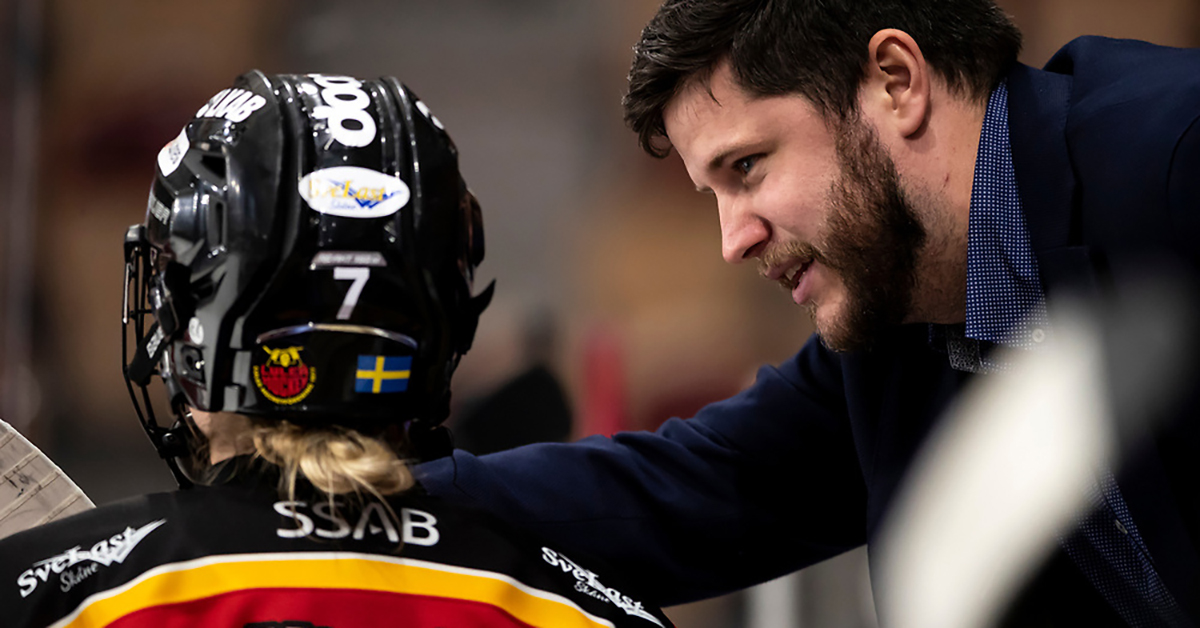
“If we have to travel the day before to have the best results and have the chance to play our best, it’s no problem. They want the girls to feel good and play good.”
“We get really good support from our club. They try to get us everything we need,” Nilsson agrees. “The other clubs around here don’t really want to deal with girls’ hockey, it’s the small clubs in the major cities that do. There are cities nearby that have programs for older girls, but they don’t develop players all the way up like we do, which gives us an advantage.”
Luleå is not trying to develop a specific type of player; it would be near impossible to with the girls all coming in at different ages.
They just want to make every player better.
“Luleå is a really successful team, and they have a great environment for development,” Kenttala says. “They have great coaches and great facilities (3 ice rinks, a gym) and it’s just a great hockey town – we get just as much support as the boys. It’s a special feeling.”
The coaches, Nilsson and Spendrup, have the same goals in mind.
“I want the girls to remember the time they were on my team. We want them to have a great experience and create memories and friendships,” Nilsson says, speaking of his daughter Natalie.
“Right now, there’s no money in girls’ hockey, so they are not going to play forever, but if we get a lot of girls that love hockey and continue our success that’s where we can grow fans and sponsors, but in the meantime, we want it to be a fun experience.”
“Friendship with the other girls, the fun of practicing together and experiencing winning and losing. To belong to a team is one of the biggest things they both take away from it,” Spendrup agrees. “It’s great that they get to experience that in an only-girls program because there are not a lot of them out there.”
His daughter, Nina wants to be a professional hockey player, or play at the highest level she can in Sweden. Her first step in that is to get into the hockey school Luleå offers.
She gets to set those goals for herself because she gets to see a program in her own town deliver on that development.
Nina and Tova Spendrup and Natalie Nilsson get to interact with Jenni Hiirikoski or Johanna Fallman or even Klara Kenttala.
They might be the next stars of the Luleå program or in the SDHL or representing their country.
How great is that!?
In Luleå, if a girl wants to play hockey – and take it seriously – there is a home for them.
Hockey players in Luleå have a chance to challenge themselves, develop as players and as people and be part of an organization that breeds success and passes it on.
“It’s exciting to be part of a program that really makes women’s hockey matter,” Kenttala repeats multiple times in our conversation. “The club goes out of their way to show they care and are as proud of their women’s program as the men’s and you don’t see that everywhere.”

